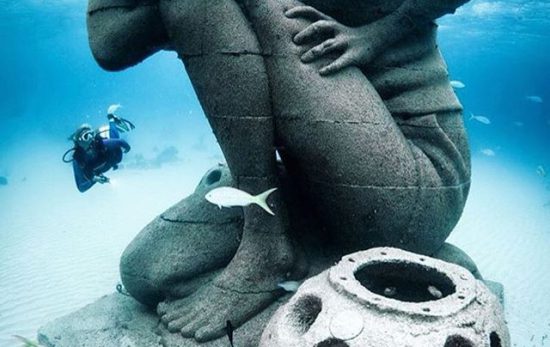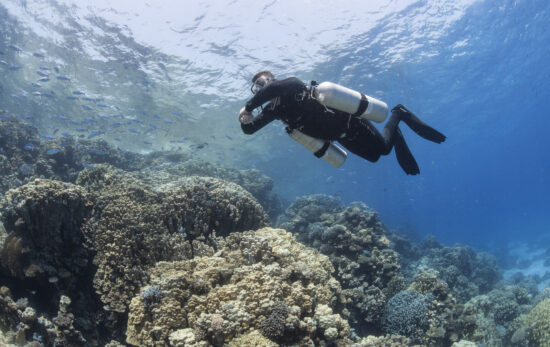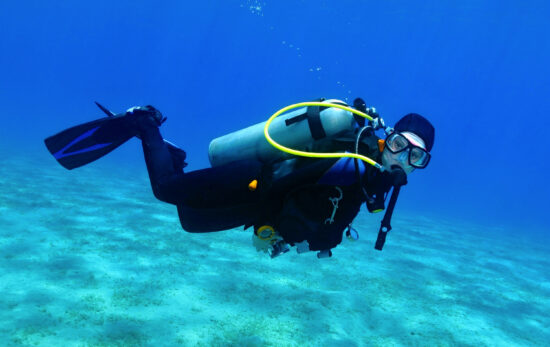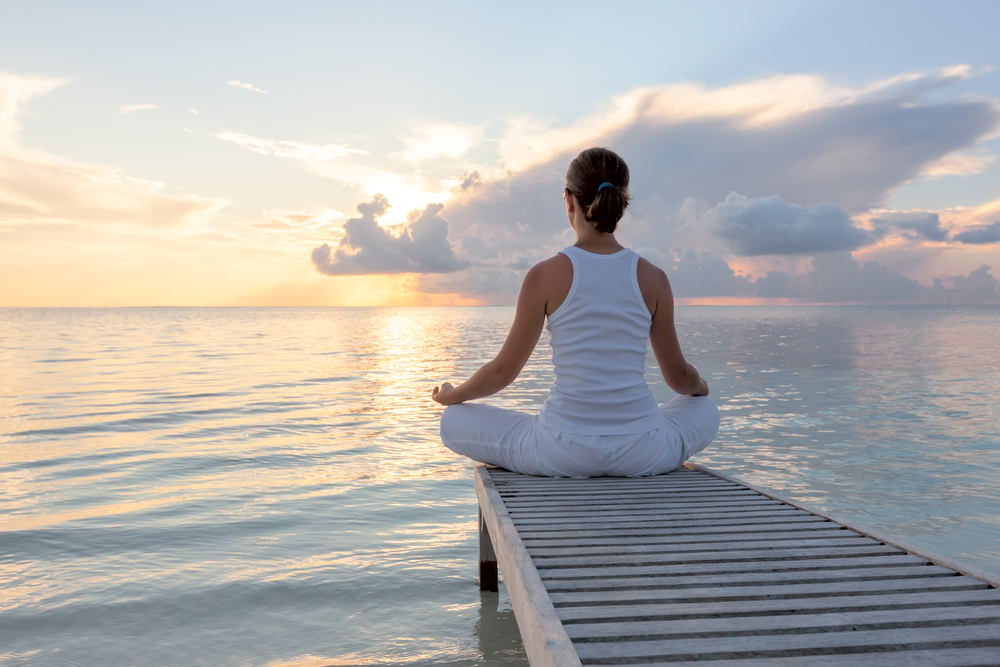How fit divers have to be is often a topic of debate. One thing experts do agree on is that a ‘reasonable’ level of fitness is required. All divers should maintain general fitness. The exercises listed below specifically relate to diving, because divers often use muscle groups in different ways when compared to other sports.
Here is a variety of exercises you can easily incorporate into your regular exercise routines that will keep you fit for diving. They can be done at the gym or in the comfort of your home. Remember to always stretch before and after any exercise and listen to your body, don’t overdo it!
Please note: You should talk to your doctor before beginning any new exercise program.
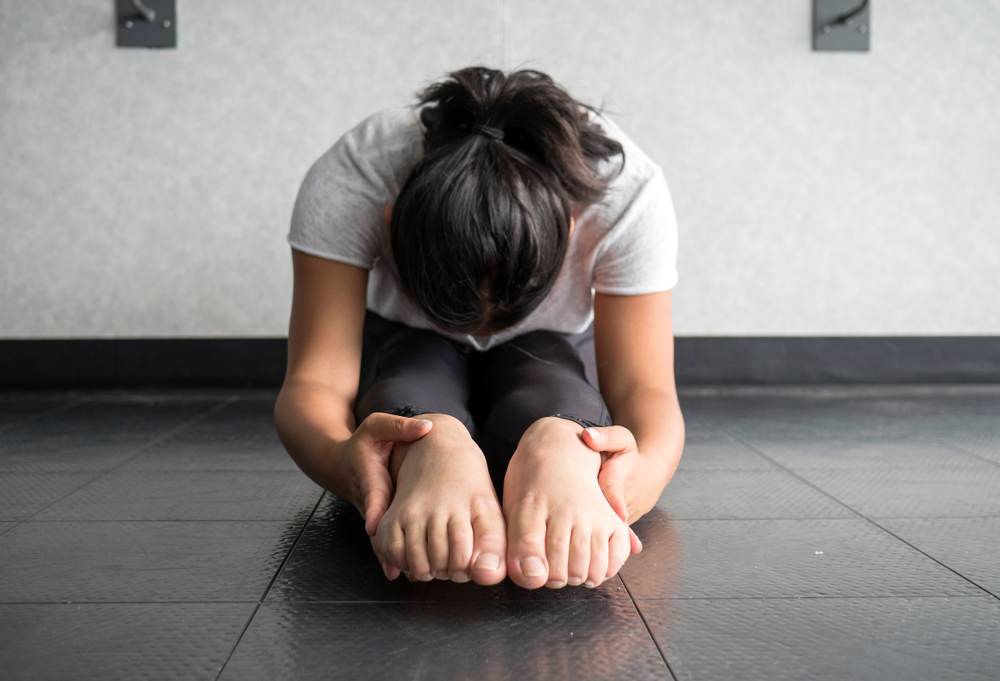
Toe Points
Unless you’re a ballet dancer it is unlikely that your weekly workout includes an hour or so on your toes. When you are finning this is basically what you are doing – pointing your toes and extending the muscles in your feet. That’s why many divers get foot cramps no matter how fit they are.
To keep these muscles fit for diving, try laying on your back or sitting up and pointing your toes, stretching your calf and foot muscles as taut as possible. Hold for one minute and release. Repeat three times with a 60 second break in between. You can incorporate this into your regular exercise warm up or adapt it by stretching out your legs and pointing your toes in your office chair. It’s also a great exercise to do on flights.
Monkey Grab
Another way to work out your foot muscles is the ‘monkey grab’. Place a pen on the floor and position your foot above it. Try to pick up the pen in your toes and hold it for 30 seconds. Repeat this exercise using your other foot. Note: If you cannot curl your toes around a pen, try a soft fabric item like a balled up handkerchief.
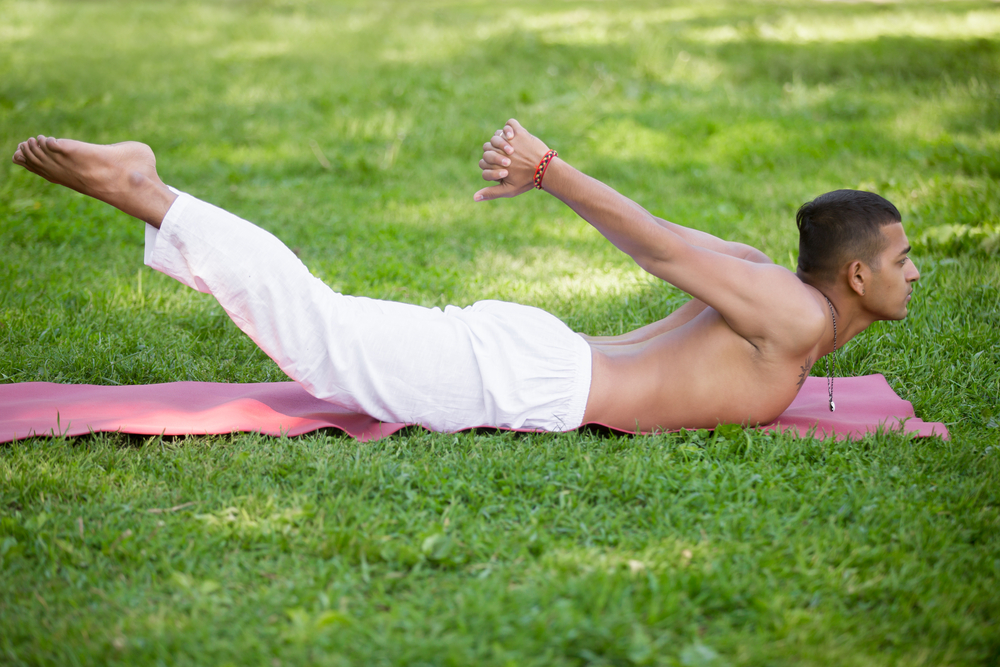
Back Extension
Posture and back strength play an important role for divers. If you have weak core muscles the easiest way to walk with a tank on your back is hunched over (like a turtle) which will cause back, neck, and shoulder pain.
Strengthen your core muscles and flexibility in your back by incorporating some simple back extension exercises. Lay face down with your arms bent and your hands/fingers interlocked underneath your forehead. Lift your head, shoulders and torso off the floor as much as you can whilst keeping your hands on the floor, aim to feel a stretching sensation and hold it for 5 seconds. Relax and repeat.
If you want to try a more advanced version, then place your hands directly behind you with your fingers interlocked. Make sure to still lift your head, chest, shoulders, and torso off the floor as much as you can. This allows for a deeper stretch. Be sure to listen to your body! If any discomfort takes place, do not continue doing it this way. Take your time and work yourself up to this level, if you are interested in doing so. Both versions of this exercise are just as beneficial.
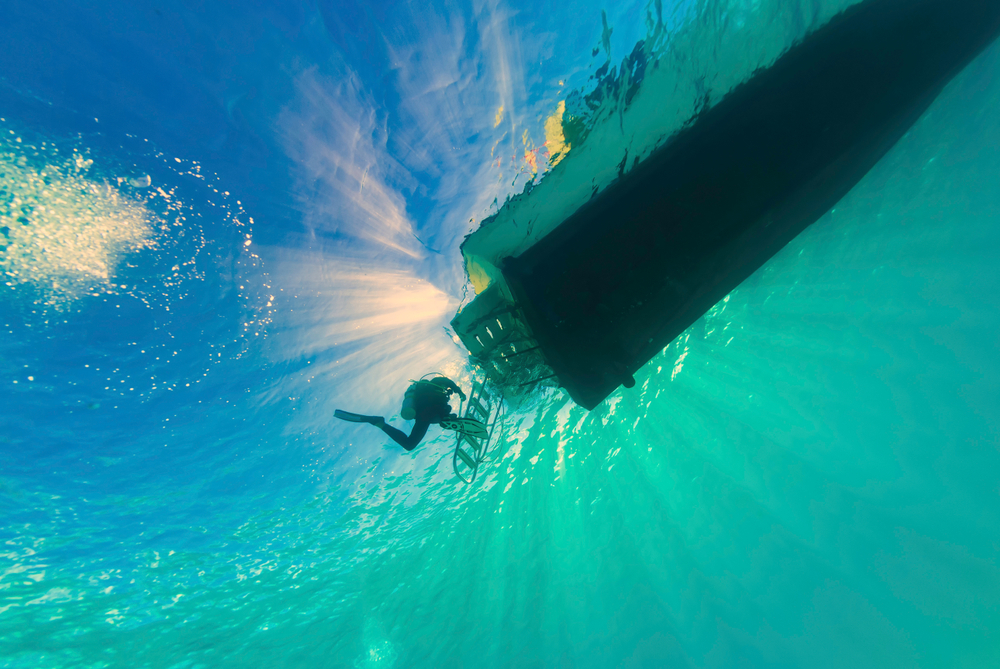
Squats
Squats strengthen various muscle groups in your body, including quadriceps, hamstrings, hip flexors, glutes, calves, and even abdominal muscles. The easiest squat exercise to incorporate is referred to as a ‘wall squat’. When doing a wall squat, stand with your back flat against a wall and lower yourself down by bending your knees until your thighs are parallel to the floor. Make sure that both knees are bent at a 90 degree angle. Hold this for as long as you can.
If you enjoy squatting or you have experience with this exercise, try incorporating weighted squats or body weight squats. Remember to never exceed past your limits and to do what is right for your body. It is important to have strong leg muscles as a diver, especially when climbing up boat ladders!
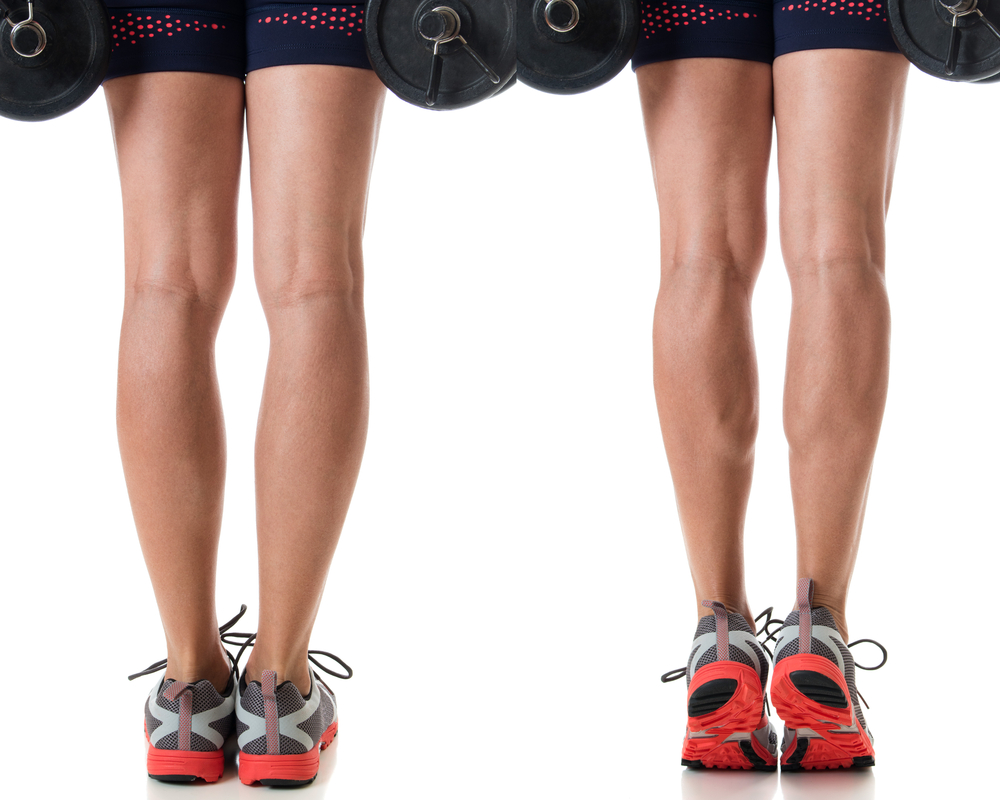
Calf Raises
Calf raises are a great exercise to strengthen your calves. This exercise is fairly simple and can be done just about anywhere. Standing with your legs shoulder-width apart, lift your heels slowly off the ground so you are on the balls of your feet and then slowly lower your heels back down so they just make contact with the floor.
Repeat this exercise until you notice the change in difficulty of lifting your heels off the ground and coming back down. In other words, feel the burn! Be sure to stretch your calves in between each set. Strengthening your calves means more effective finning and it means that you won’t tire so quickly. It will also help to reduce the likelihood of cramping in your calf muscles.
Reverse Deadlifts
Sticking with the theme of strength training, reverse deadlifts are one of the best ways to strengthen your back, legs, and core. They can be completed with a weight of your choice. Generally speaking, the heavier the weight, the fewer repetitions of the exercise you will do.
Standing straight, with your feet in line with your hips, and toes pointing forwards, hold two dumbbell weights in front of your thighs with your arms almost fully extended towards the floor. While looking in front of you and maintaining a straight back, hinge at your hips lowering the weights towards the floor, just past your knees. Breathe in as you do so. Your knees will naturally bend slightly. Stop when you reach 90 degrees. As you begin to stand up straight again, grazing the weights back up towards the top of your thighs, breathe out. Complete 8 to 12 repetitions per set.
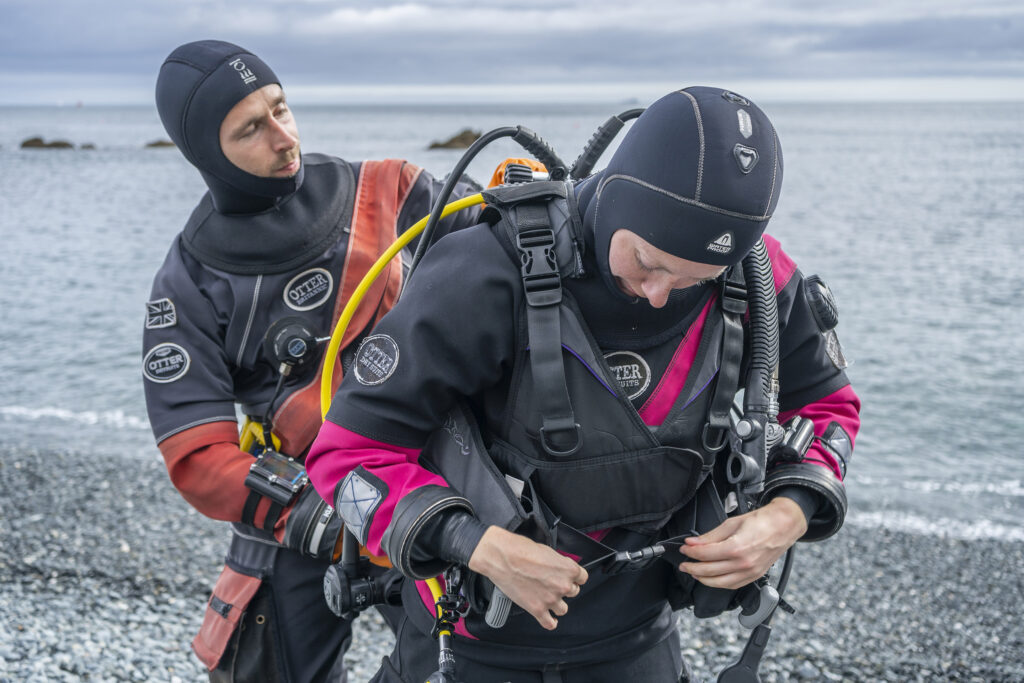
High-Intensity Interval Training
Often referred to as HIIT, this is a form of cardiovascular and strength training combined. HIIT involves short bursts of high-impact exercises, combined with intervals of rest. For example, 20 seconds of jump squats or jumping lunges, followed by 10 seconds of rest, repeated several times.
The result? Improved heart rate, great muscle tone, and improved stamina. Additionally, regular, high-intensity training can reduce overall body fat. These effects combined can improve your air consumption when diving, thanks to more efficient lung capacity. Plus, carrying your kit becomes a little lighter thanks to HIIT’s strengthening effects.
Core Strengthening
There are many workouts you can do to strengthen your core muscles. It is important to pick a few that you can incorporate into your routine. Sit-ups, abdominal crunches, bridges, and Russian twists are all great examples of core-strengthening exercises. Below is a video showing you how to do each exercise properly, while also giving you other core-strengthening exercises to try.
Engage Your Core Muscles
Another way to improve general core strength and prevent back problems is by getting in the habit of engaging your core muscles every time you pick up weighted objects, including dive equipment. Think about how you are picking up objects throughout the day. Be sure to always bend with your knees, as if you were squatting, and NOT with your back.
We use our core muscles in everything we do. It is important to not only consider our form, but our posture throughout the day. Sitting up straight will improve your core muscles and will decrease your urge to slouch. This will also help improve overall posture when it’s time to put on your dive equipment, and it will decrease the likelihood of an injury.
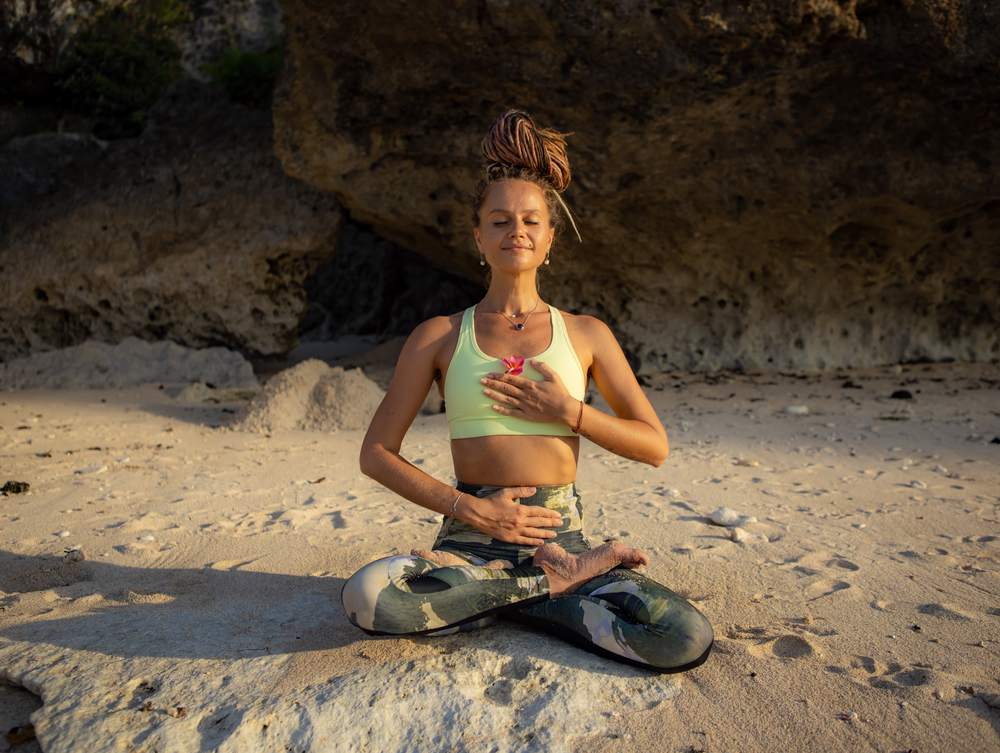
Breathwork & Yoga
Breath is the foundation for awareness. Practicing breath work and incorporating simple yoga practices can drastically change your health as a diver, both physically and mentally. Simple breathing techniques help calm the mind, relax the body, empower the brain, and allow the body to recover.
As a diver, this will allow you to learn your own breath and how to control it. No matter what level you are at as a diver, staying relaxed and recovering properly is important for everybody. If the ocean can calm itself, so can we. Read about how a champion freediver recommends breathwork and yoga in her discussion about how to stay fit for diving.
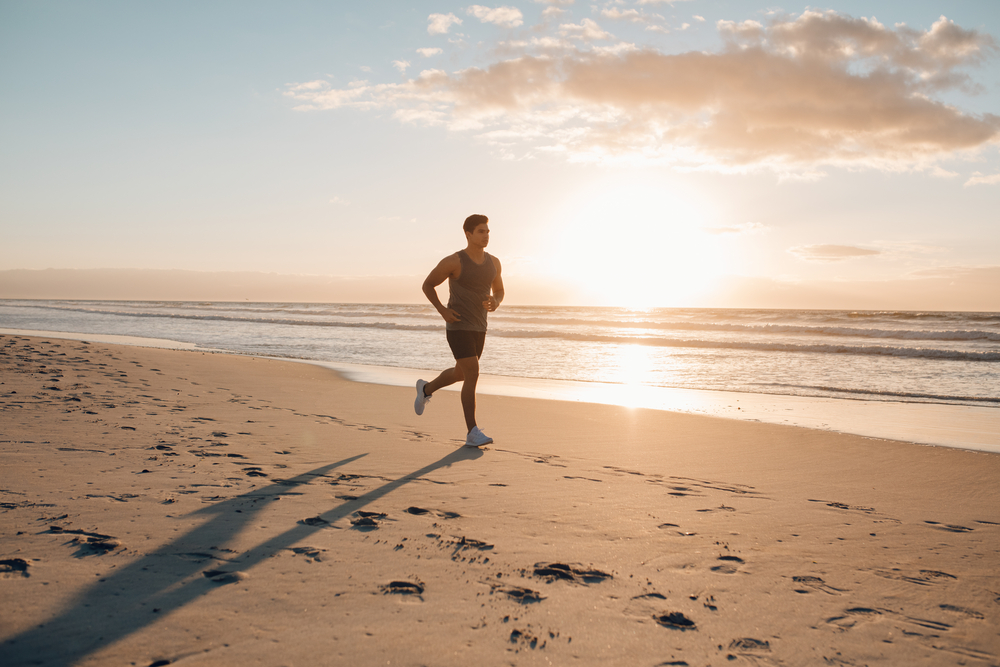
Cardio
A diver is always on the move, whether it is underwater or on land. Most activity you do as a diver increases your heart rate and requires good endurance. Walking, swimming, running, or going on a hike are all wonderful ways to help improve your overall endurance and heart rate. You want to be fit for different scenarios and events while diving. Incorporating cardio is a great way for divers to increase overall enjoyment before, during, and after dives without feeling completely exhausted.
Consider including low-impact sports as exercise options, depending on your fitness level. To read more about this, please read our blog “The Easy Guide to Fitness for Diving”.
Ready for Your Next Dive?
To encourage you on your new diving fitness journey, it’s always great to have a goal date in mind, such as the date you leave for your next dive trip! Speak with your local PADI Dive Shop today or book your next dive vacation with PADI Travel.


